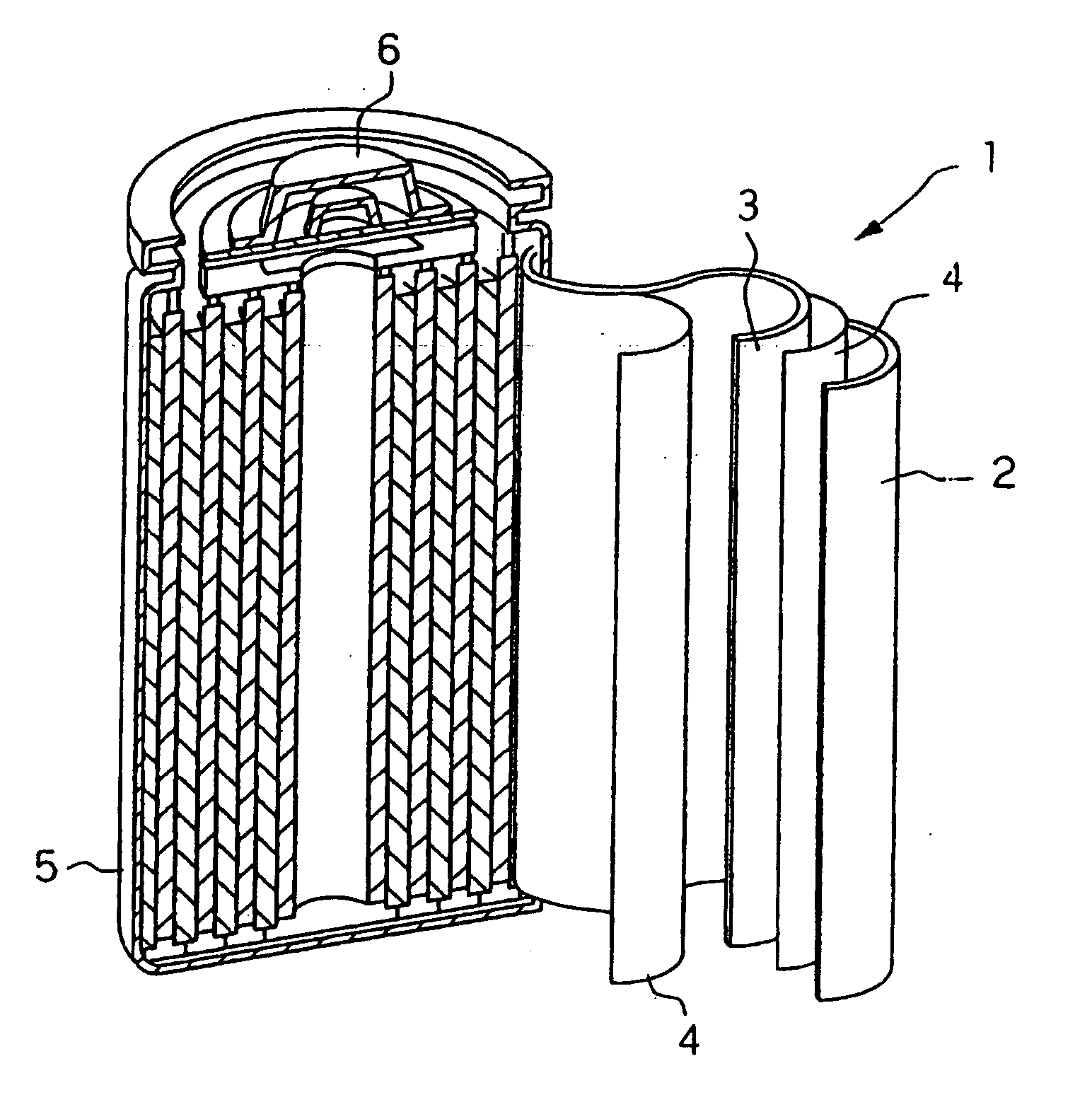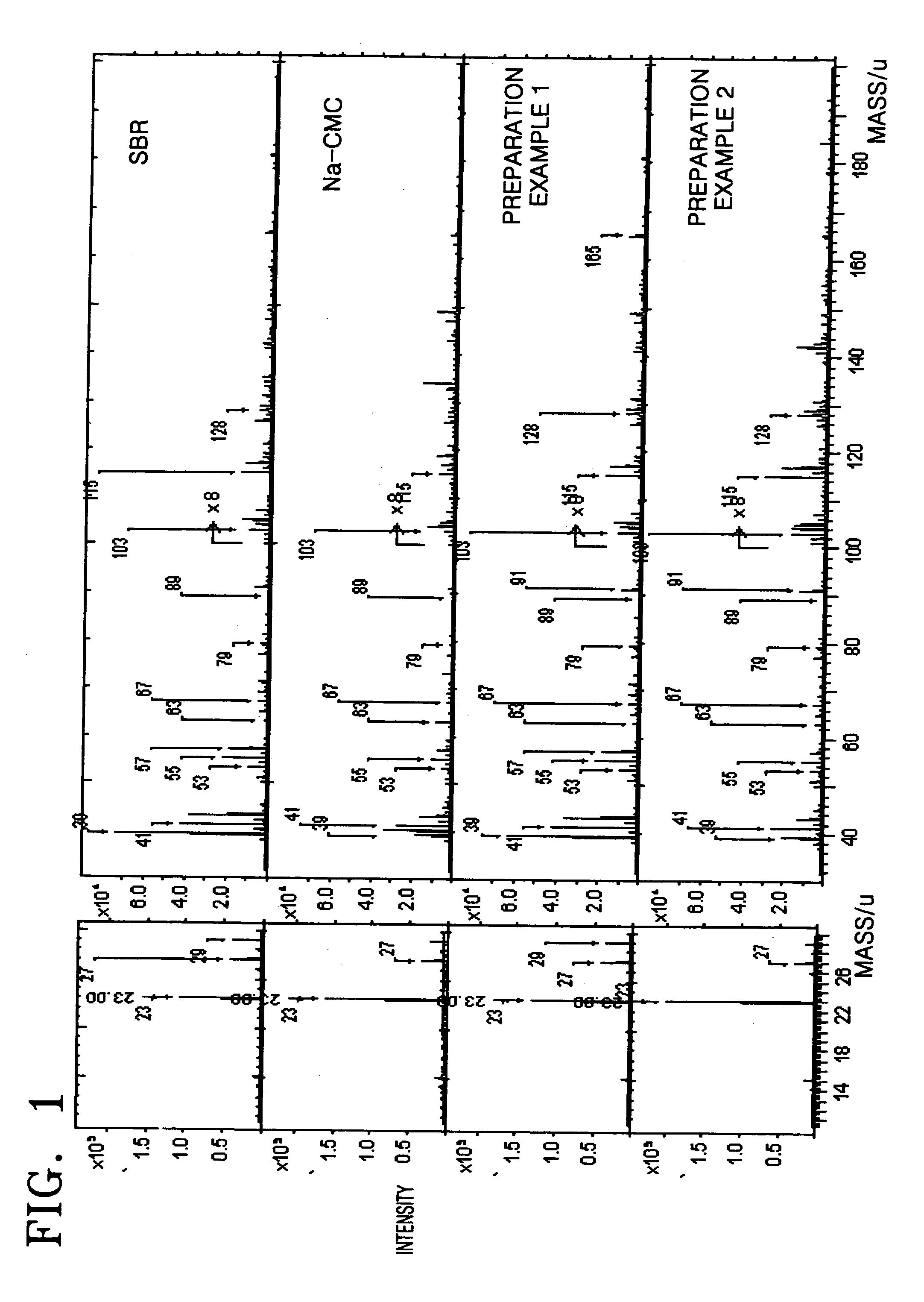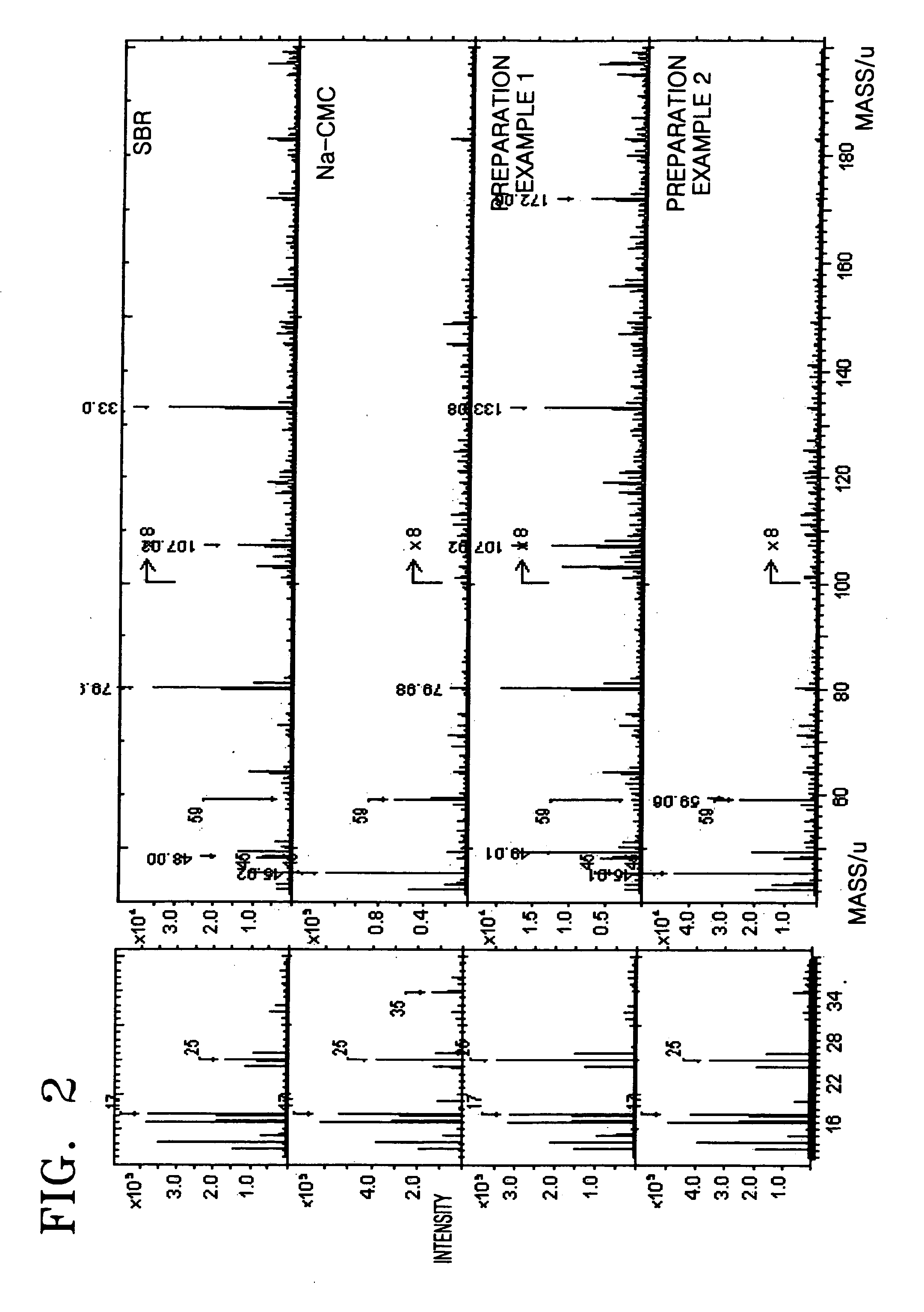Anode and lithium battery including the anode
an anode and lithium battery technology, applied in the manufacturing process of electrodes, cell components, cell component details, etc., can solve the problems of lithium by itself unstable, short circuit of anode, and decrease in charge/discharge efficiency
- Summary
- Abstract
- Description
- Claims
- Application Information
AI Technical Summary
Benefits of technology
Problems solved by technology
Method used
Image
Examples
preparation example 1
[0054] 0.2 g of carboxy methyl cellulose (CMC) powder was mixed with 2 g (10 wt %) of styrene butadiene rubber (SBR) solution, and then 20 mL of distilled water was added thereto. The resultant mixture was stirred using a mechanical agitator for one hour to prepare a slurry. Subsequently, 9.6 g of natural graphite powder was added to the slurry and stirred using a mechanical agitator for one hour to thereby prepare an anode active material slurry.
preparation example 2
[0055] 9.6 g of natural graphite powder was mixed with 2 g (10 wt %) of styrene butadiene rubber (SBR) solution and stirred using a mechanical agitator for one hour to prepare a slurry. The slurry was dried in vacuum to obtain graphite powder that was coated with styrene butadiene rubber. The graphite powder that was coated with styrene butadiene rubber was mixed with 0.2 g of carboxy methyl cellulose (CMC) and then 20 mL of distilled water was added thereto. The resultant mixture was stirred using a mechanical agitator for one hour to thereby obtain an anode active material slurry.
Preparation of Anode
example 1
[0056] 1 g of silicon powder having a diameter of 43 μm was mixed with 0.6 g of graphite nanofibers, and then 2 g (10 wt %) of styrene butadiene rubber (SBR) solution was added thereto. The resultant mixture was stirred using a mechanical agitator for one hour to obtain a first slurry. The obtained first slurry was defoamed in vacuum several times to remove foam that had been formed in the first slurry to thereby obtain a second slurry having a relatively high viscosity. Then, 0.2 g of carboxy methyl cellulose (CMC) and 8 g of graphite powder used as a conductive agent were added to the second slurry and then mixed. 20 mL of distilled water was added to the resultant mixture and stirred using a mechanical agitator to thereby obtain a third slurry. The third slurry was coated on a Cu collector using a doctor blade to a thickness of about 200 μm, dried at room temperature, and then dried in vacuum at 110° C. As a result, an anode plate was realized.
PUM
| Property | Measurement | Unit |
|---|---|---|
| aspect ratio | aaaaa | aaaaa |
| diameter | aaaaa | aaaaa |
| thickness | aaaaa | aaaaa |
Abstract
Description
Claims
Application Information
 Login to View More
Login to View More - R&D
- Intellectual Property
- Life Sciences
- Materials
- Tech Scout
- Unparalleled Data Quality
- Higher Quality Content
- 60% Fewer Hallucinations
Browse by: Latest US Patents, China's latest patents, Technical Efficacy Thesaurus, Application Domain, Technology Topic, Popular Technical Reports.
© 2025 PatSnap. All rights reserved.Legal|Privacy policy|Modern Slavery Act Transparency Statement|Sitemap|About US| Contact US: help@patsnap.com



